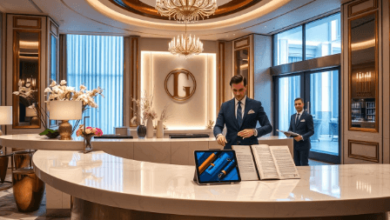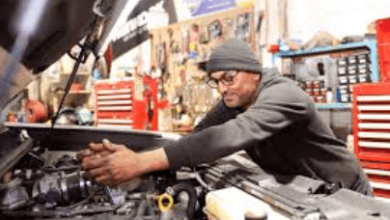The Art of Slow Travel: How to Experience Life Like a Local

The Rise of Slow Travel and Why It’s a Lifestyle Choice
More travelers are embracing the concept of slow travel, choosing to immerse themselves in the everyday rhythm of a destination rather than rushing through a checklist of tourist attractions. Slow travel is more than just an approach to sightseeing—it’s a lifestyle choice that allows people to connect with local cultures, build meaningful experiences, and truly understand the places they visit.
Unlike traditional tourism, which often focuses on must-see landmarks and tight itineraries, slow travel prioritizes local routines, from morning coffee rituals to evening social gatherings. Whether it’s sipping coffee in a cozy café, joining a bustling market scene, or getting lost in a charming neighborhood, slow travelers integrate themselves into local life rather than just observing from the outside.
To fully experience this way of travel, staying connected is essential. From using local transportation apps to discovering hidden gems off the beaten path, a stable internet connection ensures smooth navigation and real-time access to information. With an eSIM, travelers can seamlessly stay online without the inconvenience of buying and swapping physical SIM cards.
1. Embracing the Laid-Back Café and Outdoor Lifestyle
For many people, the best way to understand a city’s culture is through its café scene. A well-established coffee culture is often a sign of a destination where people enjoy taking their time, whether it’s starting the day with a perfectly brewed cup or spending an afternoon working remotely from a sunlit café.
Specialty coffee shops are more than just places to grab a quick caffeine fix—they are social hubs where locals gather, read, and have conversations. Many coffee houses also double as co-working spaces, making them a favorite for remote workers and slow travelers alike.
In cities like Melbourne and Sydney, coffee culture is deeply rooted in everyday life. Travelers can effortlessly explore these vibrant café scenes and easily find local gems by staying connected with an eSIM Australia.
Beyond café culture, the outdoors plays a major role in local lifestyles. Beachside brunches, weekend hiking trips, and a strong focus on work-life balance create an atmosphere where people make time to enjoy life rather than rushing through it. For travelers embracing slow travel, this means taking the time to explore neighborhood cafés, weekend markets, and scenic nature spots rather than cramming multiple attractions into a single day.
A reliable internet connection is a game-changer for this type of travel. With an eSIM, travelers can look up local recommendations, book activities on the go, and even work remotely from the most picturesque locations.
See also: Software Development Services for Custom Business Solutions
2. Experiencing the Social Ritual of Pubs and Neighborhood Markets
In many parts of the world, pub culture is deeply ingrained in the local lifestyle. Pubs are more than just drinking spots; they are gathering places where people meet after work, celebrate small wins, and catch up with friends. Unlike bars or nightclubs, pubs have a cozy and inviting atmosphere that makes them a great place for travelers to strike up conversations with locals.
In cities like London or Manchester, spending evenings at a local pub provides a genuine glimpse into the British way of life. Using an eSIM United Kingdom makes it easy for travelers to locate nearby pubs with strong local vibes, ensuring they don’t miss out on this integral social tradition.
Beyond nightlife, neighborhood markets are another cornerstone of slow travel. These markets offer a glimpse into local culinary traditions and daily life, with fresh produce, handmade goods, and authentic street food. Unlike supermarkets, which can feel impersonal, local markets are interactive, with vendors sharing stories and offering samples to customers.
For slow travelers, visiting these spaces provides insight into how locals shop, eat, and socialize. Exploring a market at a leisurely pace, chatting with vendors, and tasting local delicacies creates a more authentic travel experience than simply dining at tourist-oriented restaurants.
Navigating these local experiences is much easier with a stable internet connection. Many events, meet-ups, and special market days are announced online through social media or local event apps. Having an eSIM ensures that travelers can stay updated on upcoming activities, find hidden gems, and make reservations without worrying about connectivity issues.
3. Mastering the Art of Street Food and Local Daily Life
Street food is one of the purest expressions of a destination’s culture. Unlike fine dining establishments that cater to tourists, street food stalls and small eateries reflect what locals actually eat on a daily basis. From morning coffee traditions to late-night meals at roadside vendors, street food plays a major role in shaping a city’s identity.
In destinations like Hanoi or Ho Chi Minh City, sampling vibrant street cuisine is essential to experiencing local life. Finding the best spots to enjoy authentic dishes such as phở, bánh mì, or bún chả is easier with constant connectivity. Travelers equipped with an eSIM Vietnam can easily browse local food recommendations, navigate through bustling streets, and even make mobile payments effortlessly.
A slow travel approach to food means skipping the big-name tourist restaurants and opting for small, family-run eateries or food carts instead. Observing how locals order, what they pair their meals with, and even how they interact with vendors provides invaluable cultural insights. It’s not just about tasting new dishes—it’s about understanding the rhythm of daily life in a new place.
Beyond food, another key aspect of slow travel is adapting to local ways of getting around. In many destinations, motorbikes, bicycles, or public transport are essential parts of life. Renting a scooter, taking local buses, or simply walking through hidden alleyways allows travelers to explore areas beyond the usual tourist routes.
To fully embrace this lifestyle, having a stable internet connection is crucial. Many locals use super-apps that combine ride-hailing, food delivery, and cashless payments, all of which require mobile data to function. An eSIM makes it easy for travelers to integrate into this digital ecosystem, allowing them to navigate efficiently and experience daily life as locals do.
Conclusion: Living Like a Local with an eSIM
The true beauty of slow travel lies in immersing yourself in the daily routines of each place you visit. Whether it’s unwinding at an Australian café, socializing in a British pub, or savoring street food in Vietnam, these authentic experiences offer deeper insights into local cultures. Slow travel invites you to take your time, discover hidden gems, and build meaningful connections, turning your travels into unforgettable journeys.




